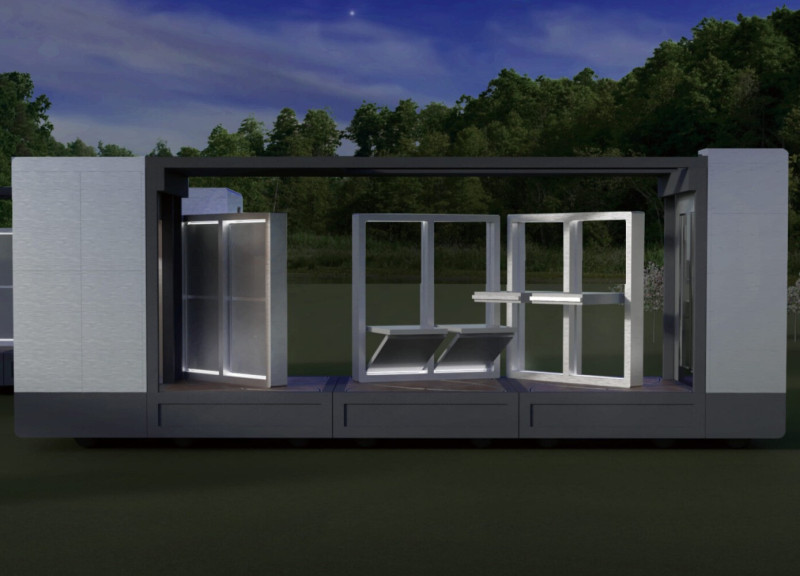5 key facts about this project
At its core, the project represents a blend of modern design principles and traditional elements, creating a structure that is both contemporary and respectful of its historical roots. Functionally, the design accommodates a variety of uses, including public gathering spaces, individual work areas, and recreational facilities, making it a multifunctional hub for residents and visitors alike. This versatility is a crucial aspect of the architectural intent, as it aims to cater to the diverse needs of the community, encouraging social connectivity and engagement.
The design features numerous important architectural elements that contribute to its overall efficacy. Large, strategically placed windows maximize natural light, fostering a sense of openness and transparency within the interior spaces. This attention to natural lighting is complemented by high ceilings, which not only enhance the spatial experience but also contribute to improved air circulation and thermal comfort. The materials chosen for the project reflect a commitment to sustainability and local identity. Reinforced concrete forms the backbone of the structure, providing the necessary durability while allowing for expansive, open floor plans that facilitate flexibility in space utilization. Additionally, the inclusion of low-emissivity glass minimizes energy consumption by optimizing heat gain and loss, reinforcing the project’s commitment to environmental responsibility.
Another noteworthy aspect of the design is the use of sustainable materials such as sustainably sourced wood, which adds warmth and texture to the interior finishes. Terracotta cladding offers an aesthetic that resonates with traditional architectural forms while also enhancing thermal performance. Integrating green roof systems not only serves as an innovative design feature but also contributes to biodiversity and enhances the ecological footprint of the building. These carefully selected materials not only improve the building's energy efficiency but also foster a strong connection between the structure and its landscape.
Unique design approaches are evident throughout the project, particularly in its integration of outdoor and indoor spaces. Balconies and terraces are designed to facilitate interaction with the surrounding environment, promoting outdoor activities while also serving as extensions of the indoor areas. This seamless transition between spaces encourages communal use and enhances the overall user experience. Various architectural features, such as overhangs and canopies, provide shelter from the elements while also serving as aesthetic focal points, further elevating the building’s design integrity.
Throughout the project, the architects have placed significant emphasis on the relationship between the building and its site. By orienting the structure to take advantage of natural vistas and existing topography, they have created a sense of place that is both inviting and functional. This sensitivity to the landscape not only enhances the visual appeal of the project but also promotes sustainability by reducing the reliance on artificial lighting and climate control systems.
In summary, this architectural design project embodies a holistic approach to modern architecture, blending functionality, aesthetics, and sustainability to create a meaningful contribution to its community. For those interested in understanding the depth of this project, exploring its architectural plans, sections, and designs will provide invaluable insights into its design rationale and construction methodologies. delving into these elements will reveal the thoughtful considerations that have gone into making this space a true reflection of its context and an asset to its users.


























